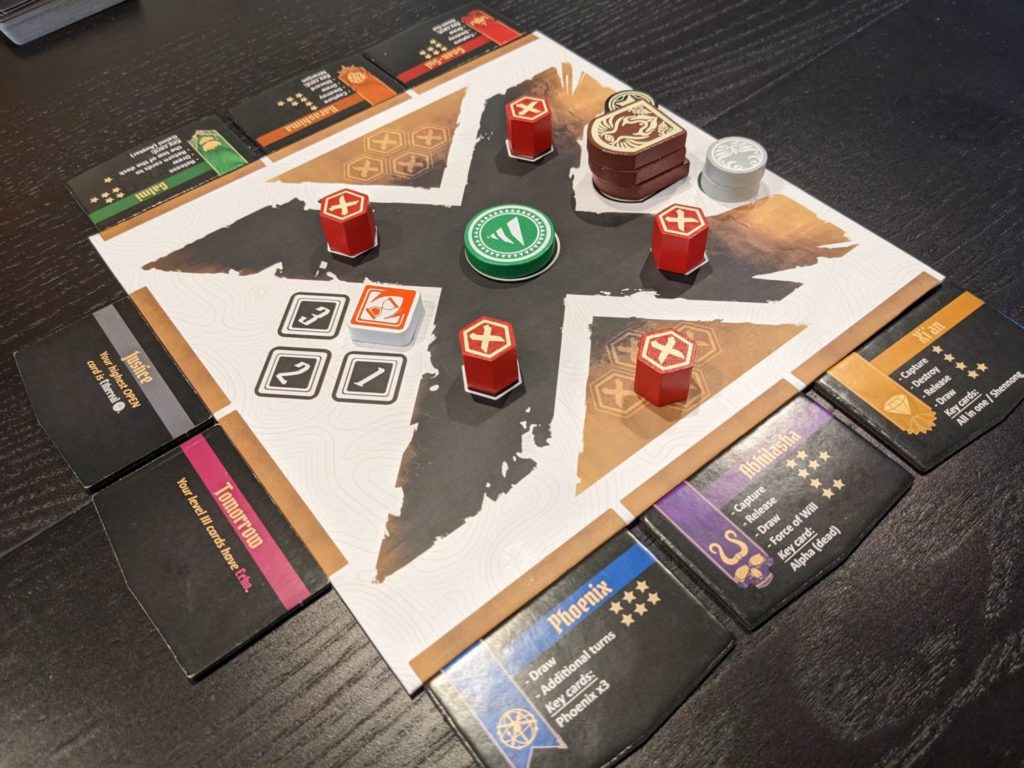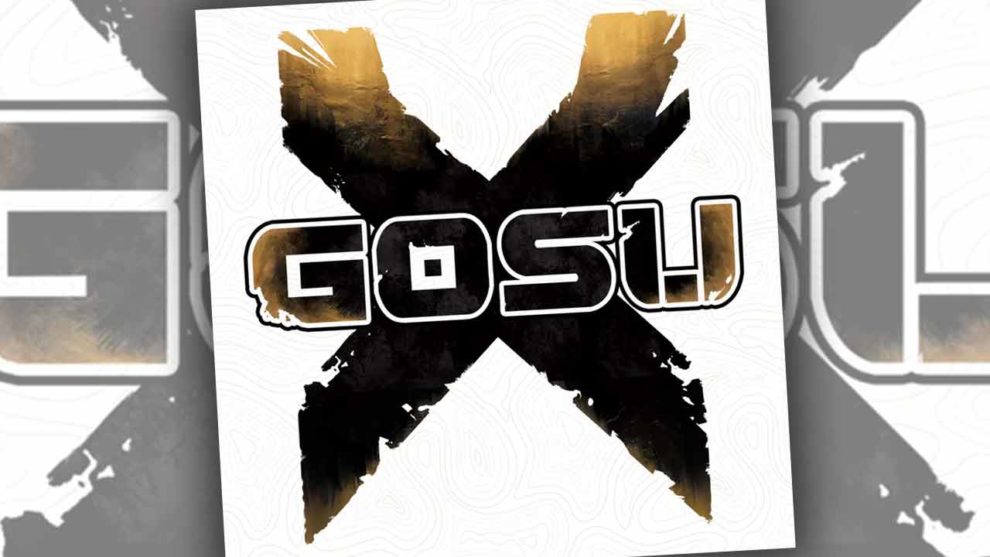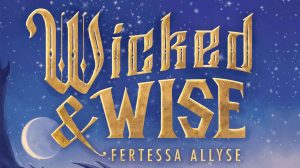A friend of mine dropped by the house recently to give the new two-player card combo game Gosu X (2022, Sorry We Are French) a spin. I explained the rules to him, then I mentioned one additional item:
“Most of the cards do something unique. I’ll keep the glossary open near the play area so that you can reference it each time you need to check on what each card can do.”
That reference turned into the most important thing we had at the table, because players new to the Gosu X system will need to look at the glossary on nearly every turn. Could that prop the game up enough to make it interesting, or is it tedious to check an aid on every turn?

The Great Battle (The First of Maybe Three)
Gosu X reimplements some of the mechanics from two other games: Gosu, and Gosu 2: Tactics (also known as Gosu Tactics).
In Gosu X, each player takes control of three out of eight different clans in the box. Each clan is made up of a 15-card deck featuring eight Troop cards (four lower-level grunts, each with a duplicate), five unique Hero cards, and two Immortal cards. One of the Immortals is the unique leader of that clan, and one is a shapeshifter known as Byun Hyung Ja, a card that provides a unique ability.
After players draft three clans, they take all of the 45 total cards and shuffle them, dealing seven cards as their starting hands. Gosu X then becomes a tableau builder; each person’s play area is known as its army. Players start in the imaginary lower-left corner of a three-row, five-column grid and place cards from their hand into the grid to trigger actions and build up military strength in their army.
Troops have to be built on the bottom row, Heroes in the middle, Immortals on top. But there can never be more Immortals than Heroes than Troops, so you’ll have to keep the entire army in balance. And you’ll also have to keep up with a ton of different triggering effects, ongoing abilities, activation powers, and instant-win effects in your tableau.
Enter the rulebook’s glossary.
In Gosu X, you’ll spend quite a bit of time deciding which cards to play, and within that, what each of your three clans can do both for the other clans in your deck, and against the clans of your opponent. That’s because combos are important, if you can string any together. All of this is also important because you’ll have to keep track of so many keywords: capture, sacrifice, destroy, release, and “remove from the game” all represent slightly different ways cards can be diminished during play.
Once each person has played as many cards as they can, they pass. When both players have passed (or one has passed, and the other has taken a max of three final actions), the fight moves to The Great Battle. A Supremacy token is given to the player whose army has the highest military strength, then players discard half of their army (tableau) before a new round begins if neither player has two Supremacy tokens.
When a player has two Supremacy tokens, a full 15-card face-up tableau, five activation tokens, or the Goan Sul and/or Justice faction are in play and a player triggers that faction’s win condition, the game ends. Gosu X takes 45-60 minutes to play.

Balanced, But Bland
The best thing about Gosu X are the names and artwork of the clan cards. Some of the cards are pretty cool, both in terms of their names (one of my Xi’an cards was called 3 Wishes; another clan is led by the immortal known as…Tomorrow) and the artwork (the Tomorrow clan has Troops that look like walking eyeballs).
Artist David Sitbon (who also did the artwork on one of my favorites from last year, Galileo Project) provides a great touch to the proceedings here. Add to that another stellar physical production from Sorry We Are French—after their work on Iki and Galileo Project, I’m always excited to see what they’ll bring to the table next—and from a look and feel standpoint, Gosu X works.
It’s the gameplay that feels sort of plain. The first page of the rulebook shares that the game took more than four years to develop and more than 4,000 playtests (!!!) to get into the hands of the players. From a balance point of view, the game certainly feels on point; most of my games have ended with a player winning by only a couple of military strength points, and tiebreakers are triggered regularly.
But I wish it was more exciting! Building a mix of clans during the initial draft is interesting; players can choose to focus on more aggressive clan tactics or passive card draw powers, or a mix of those plus other skills. With eight clans in the box, the two clans that are not chosen by players force two ongoing conditions on both players. Sometimes, that can be interesting, particularly the Narashima condition that limits hand size to five cards, down from the standard seven cards.

During play, I was surprised at the lack of exceptionally cool combos. Also, all of the Troop cards in the game have a strength of two, Heroes have a strength of three, and Immortals have a strength of five. Players might occasionally be able to trigger a power that boosts the strength of certain face-up cards. Generally, though, the player who plays the most face-up cards will win the Great Battle at the end of each round. I wish Gosu X had more variety in the strength of each card level.
Players can swap cards from their tableau with cards from their hand for a discard fee, known as a “shift.” Activation tokens grant players the chance to draw more cards from their deck, or possibly activate an existing card in their tableau. There are always things to do, but none of those things really sung to me.
I will grant you this, though—for two players willing to really dig into learning the strengths and weaknesses of each three-clan combo, Gosu X will certainly have legs. I think the game struggles as a pick-up-and-play experience because the on ramp to learning the card language is a bit bumpy. I don’t know if that will begin to crystallize on play three, five, ten or twenty for the average gamer. But if you are going to buy a copy of Gosu X, buckle up and plan to spend 20+ plays really seeing everything the game has to offer.
Gosu X falls outside of my sweet spot; I don’t do many head-to-head card games, lane battlers or tableau builders like Magic: The Gathering. Still, it offers an experience that is occasionally interesting but never thrilling for a person who doesn’t play many of these. No one in my circles had heard of the other Gosu games, so I don’t have a sense of how large the built-in audience is for the Gosu universe. If you are a fan and are looking to expand your collection beyond the goblin-based combos of the original Gosu games, Gosu X is worth a look!












Add Comment